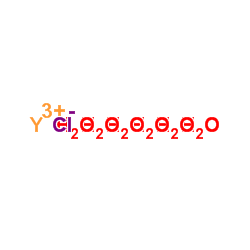| Structure | Name/CAS No. | Articles |
|---|---|---|
 |
YTTRIUM CHLORIDE HEXAHYDRATE
CAS:10025-94-2 |
|
 |
yttrium chloride
CAS:10361-92-9 |
|
 |
Scandium
CAS:7440-20-2 |